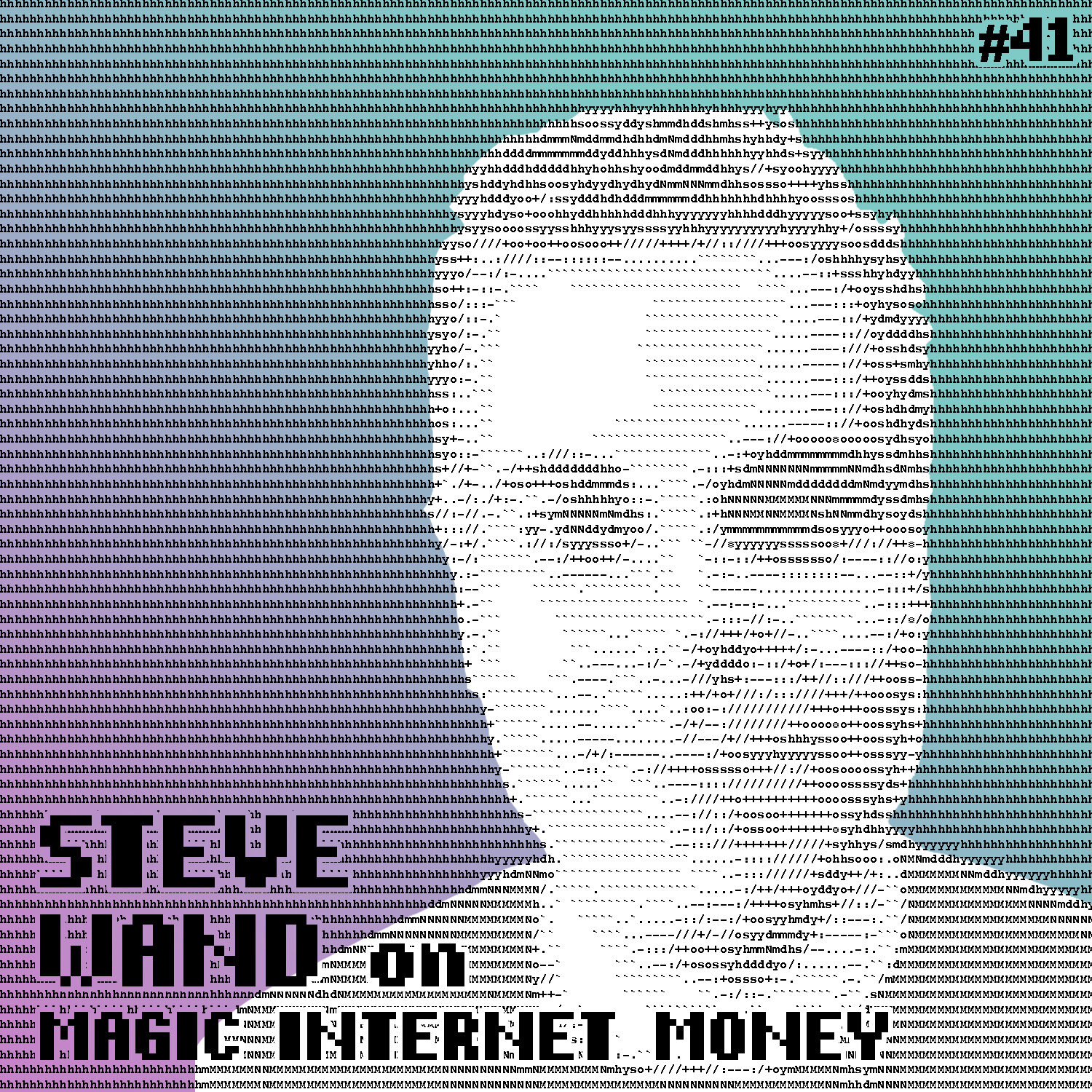Exploring NFTs
with Steve Wand
Beyond the Material: How NFTs Make Virtual Goods Valuable
In this episode of Magic Internet Money, host Brad Mills invites Steve Wand, art collector and NFT expert to the show to discuss the recent NFT boom. Steve explains what an NFT is and his experience with digital realty, collectables, and virtual assets. The short version is that NFTs are a blockchain signature that can be attached to digital items and then sold to a buyer. Wand discussed a little bit about the “metaverse”; the idea that the digital space is going to grow and expand into our everyday lives enough that humans will have created another “layer” of reality, experienced through technology. The two share their experiences with virtual economies from video games like World of Warcraft to various modern blockchain projects.
What is an NFT?
NFTs are the name of the game in this episode. An NFT is a Non-Fungible Token. What an NFT does is it essentially creates a certificate of authenticity for a digital item. The most prominent use case for NFTs is digital art. It should be clarified that NFTs are not money, but they are valuable. Buying NFTs is essentially the same as buying art or collectables. Both of which Steve has a lot of experience with. Essentially what you are buying when you buy an NFT is a ledger entry certifying that you are the current owner of a digital asset. Like the deed to a house, or a receipt of purchase at an auction for an antique.
The Rise of the Virtual Economy
Brad offers some important speculation later in the podcast about how he thinks that NFTs might be a bubble, and they are in the short term. In my opinion, NFTs are exploding in popularity now because they’re pretty much just entering the public consciousness. Suddenly digital goods can be traded in a world where people didn’t know that these goods existed. Now that people know they exist, the demand for them is particularly high since market predictions for the future NFTs aren’t well known.
Steve and Brad both speculate that NFTs and the future value of the digital economy are going to trickle in over the next few years and experience volatility in the process. Steve mentions his daughter at home who “doesn’t want real stuff”. Brad cites a similar case with a relative of his and these are the changing faces of the market. As consumers begin consuming digital goods more often, companies are going to introduce tokens and blockchain ledger based assets that will go along with products. Steve’s description of NFTs as broad-stroke collectables is very applicable.
As future developments in the field of blockchain technologies expand, so too will technologies like NFTs. Steve mentions that other altcoin projects don’t have the same value as Bitcoin but instead offer other important use cases that could generate value. Regardless, blockchain technologies of all kinds are under the microscope for which ones are going to survive techno-capital booms such as the one Bitcoin has been going through this year.
Has this ever been done Before?
Sort of. Over the course of the 2000’s before 2020, the concept of virtual economies was only semi-known in specific communities. Brad cites his experience with World of Warcraft, which has an auction house where players can trade in-game goods for a set in-game gold price. But World of Warcraft isn’t the only online game out there. Some of these were taken pretty seriously, such as the shenanigans of the EVE online community which has had $200,000 expenses from in-game spaceship battles.
The list of losses, gains, and transfers of massive quantities of digital assets is still in its early days, so don’t lose hope if you think it’s too late to invest. The best sorts of digital assets have historically been long-running services that require time investments from a large community of users, so online games are the low hanging fruit in that value scheme. Another example of digital asset sales is the simulation game, Second Life, which includes but is not limited to a system where players can make 3D models of assets and sell them to players for a price that they set. Second Life saw its first millionaire in 2005. There are people that have been making their living this way for a while now and there are a lot of options for investment. Steve mentions that it’s in spaces like these that NFTs really got their start. Who knows where this next decade will take cryptocurrency and the world of NFTs.
Timestamps
00:01:39 - Show start and introducing NFTs. Steve also explains his experience in collectables.
00:05:08 - Cryptopunks, the pokemon-like blockchain game and past NFT projects.
00:07:07 - Steve and Brad discuss the value hidden in digital assets
00:14:10 - Steve explains why NFTs are different than an altcoin token and bitcoin
00:18:27 - Discussion of Ethereum’s role in NFTs, and also the struggles that have come with pairing ETH with digital art.
00:23:07 - Brad discusses the idea of a possible NFT bubble that is emerging because of the recent boom
00:30:00 - Virtual real estate and other digital goods: Why they’re valuable and experience with it
00:36:56 - Future use cases for token technology Steve and Brad share future use cases for token technologies
00:49:32 - The two discuss the future of NFT technology and how the digital space is expanding
01:09:32 - Social media plugs and wrap up
